Cancer is the second most common disease in India responsible for maximum deaths per year. This is owing to the poor availability of
prevention, diagnosis and treatment of the disease. Lung, oral and pharyngeal, stomach and prostate cancers mostly affect men, where as
in women, breast, ovary and cervix cancers are most common.

Lung cancer is one of the common cancers in India. Smoking, chewing tobacco, increasing environmental pollution and other harmful carcinogenic compounds
such as asbestos, arsenic, are a few things that triggerÃÂ lung cancer.
If there's reason to think that you may have lung cancer, your doctor can order a number of tests to look for cancerous cells and to rule out
other conditions. In order to diagnose lung cancer, your doctor may recommend:

An X-ray image of your lungs may reveal an abnormal mass or nodule. To know more Click Here
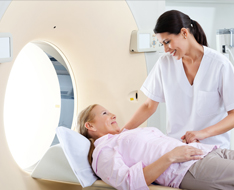
A CT scan can reveal small lesions in your lungs that might not be detected on an X-ray. A CT scan can
also provide precise information about the size, shape, and position of any lung tumours and can help
find enlarged lymph nodes that might contain cancer that has spread from the lung. To know more Click Here
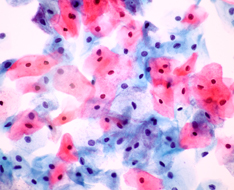
For this test, a sample of sputum (mucus you cough up from the lungs) is looked at under a microscope
to see if it contains cancer cells. The best way to do this is to get early morning samples from you 3
days in a row. To know more Click Here

Your doctor can perform a biopsy in a number of ways including, Bronchoscopy,Mediastinoscopy,Needle
biopsy. To know more Click Here
Detailed genetic testing can be done on your tumor to help you and your doctor decide on the right treatment option for you.
These tests may involve:

EGFR mutation testing is the analysis of tumour DNA to detect mutations in the EGFR gene.
<
In normal cell growth, small chemicals called growth factors are produced by one cell and attach to proteins called receptors on that same or
nearby cells. By attaching to these receptors, the growth factors start a chemical reaction inside the cell, which causes the cell to grow and
multiply. In cancer, there may be too many growth factors present, or the receptor may be mutated so that it âÂÂthinksâ the growth factor is
attached when it really isnâÂÂt. One such receptor that can be mutated in lung cancer is the Epidermal Growth Factor Receptor (EGFR). To know more
Click Here
KRAS Mutation testing is the analysis of tumour DNA to detect mutations in the KRAS gene. KRAS is homologous to the oncogene from the
Kirsten rat sarcoma virus. RAS proteins act as a switch that controls cell proliferation. Oncogenic mutation makes RAS insensitive so it is
continually switched âÂÂon.â The message is delivered continuously, giving the cell unchecked permission to proliferate.To know more Click Here
ALK Mutation testing is the analysis of tumour DNA to detect mutations in the ALK gene.
ALK is another growth factor receptor that can be present
in cancer cells. ALK appears to be essential during fetal development, and is normally present in adults only in brain tissue. However, in some cancer
cells type of mutation called a gene rearrangement occurs that fuses another gene to ALK and âÂÂturns it on,â telling cancer cells to multiply.
To know more Click Here

Breast cancer is the most common cancer in women. Risk factors for developing breast cancer include female sex, obesity, lack of physical exercise, drinking alcohol, hormone replacement therapy during menopause, ionizing radiation, early age at first menstruation, child bearing history and older age. About 5âÂÂ10% of cases are due to genes inherited from a personâÂÂs parents, including BRCA1 and BRCA2 among others.
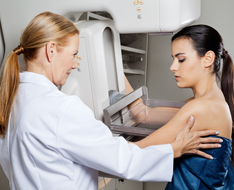
A mammogram is an X-ray of the breast. Mammograms also referred as mammography are commonly
used to screen for breast cancer. If an abnormality is detected on a screening mammogram, your doctor
may recommend a diagnostic mammogram to further evaluate that abnormality. In a diagnostic
mammogram, more x-rays are taken, providing views of the breast from multiple vantage points.To know more Click Here
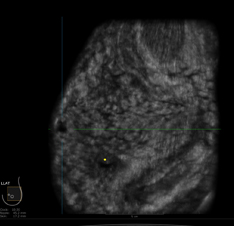
Breast ultrasound is often used to evaluate breast problems that are found during a mammogram or on
physical exam. Ultrasound helps distinguish normal findings like cysts or fat lobules from suspicious
breast changes that need biopsy. In someone with a suspicious breast mass, ultrasound can be used to
look for enlarged lymph nodes under the arm. Breast ultrasound is often used to guide a needle to biopsy
breast lesions and abnormal lymph nodes.To know more Click Here
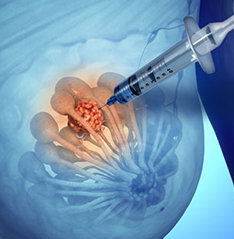
A sample of abnormal cells may be removed in a procedure called a biopsy.Your doctor can perform a biopsy in a
number of ways including, ultrasound-guided core biopsy, stereotactic biopsy, fine needle biopsy, surgical biopsy.
To know more Click Here
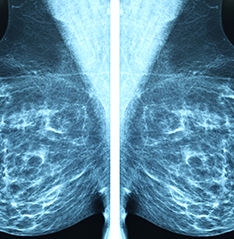
A breast MRI captures multiple images of your breast. Breast MRI images are combined, using a computer,
to generate detailed pictures.
Breast MRI usually is performed after you have a biopsy that's positive for cancer, and your doctor needs
more information about the extent of the disease. In certain situations, such as for women with high risk of
breast cancer, breast MRI may be used with mammograms as a screening tool for detecting breast cancer.
To know more Click Here
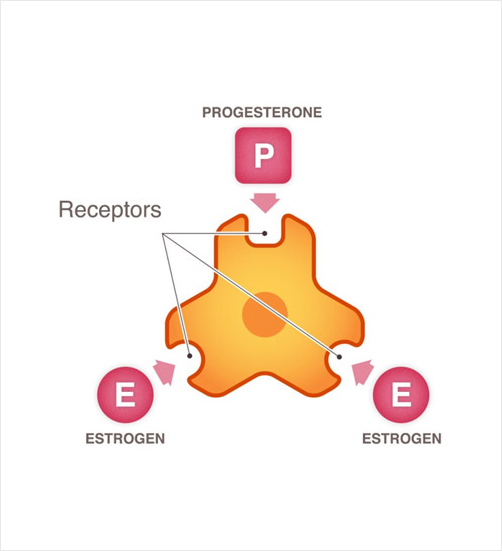
Estrogen and Progesterone are 2 female hormones. They can
stimulate the growth of some cells, including breast cancer cells.
Estrogen and progesterone receptors are inside or on the surface of
normal breast cells and some types of breast cancer cells.
These receptors are where the hormones attach to the cells. Once they are
attached, the hormones can affect the behaviour or growth of the
cells.
Knowing the hormone receptor status of the tumour helps doctors predict:

HER2/neu test looks for a specific kind of protein that is found with
certain types of cancer cells and the gene that produces it. The
formal name of that gene is the human epidermal growth factor
receptor 2, and it makes HER2 proteins. These proteins are receptors
on breast cells.
Normally, HER2 receptors help control how a healthy breast
cell grows, divides and repairs itself. But in about 25% of breast cancers,
the HER2 gene doesn't work correctly and makes too many copies of
itself (known as HER2 gene amplification). All these extra HER2 genes
tell breast cells to make too many HER2 receptors (HER2 protein
overexpression). This makes breast cells grow and divide in an uncontrolled way.
HER2 testing is performed in breast cancer patients to assess
prognosis and to determine suitability for drug therapy. Tests are
usually performed on biopsy samples obtained by either fine-needle
aspiration, core needle biopsy or surgical excision.
Immunohistochemistry is used to measure the amount of HER2
protein present in the sample. Alternatively, fluorescence in situ
hybridisation (FISH) can be used to measure the number
of copies of the gene which are present.To know more Click Here
The most common form of hereditary breast and ovarian cancers (HBOC) are due to mutations in the BRCA genes. BRCA1 and BRCA2 are
tumour suppressor genes which are genes that normally prevent cancer from developing. Women who have inherited mutations in BRCA1 and
BRCA2 genes face a much higher risk of developing breast cancer and ovarian cancer compared with the general population.
The BRCA gene test is a blood test that uses DNA analysis to identify harmful changes (mutations) in either one of the two breast cancer
susceptibility genes â BRCA1 and BRCA2.
The BRCA gene test is most often a blood test. A doctor, nurse or medical technician inserts a needle into a vein, usually in your arm, to draw
the blood sample needed for testing. Your blood sample then goes to a lab for DNA analysis.
In some cases, other sample types are collected for DNA analysis, including saliva or skin biopsy samples.To know more Click Here

Ovarian cancer is the most fatal gynaecological cancers as it remains silent for a long time. However, it is a highly aggressive cancer and is one
of the leading causes of women's death. Certain factors that may increase your risk of ovarian cancer are age, inherited gene mutation,
hormone replacement therapy, age when menstruation started and ended, child bearing history, fertility treatment, smoking, use of an
intrauterine device and polycystic ovary syndrome.
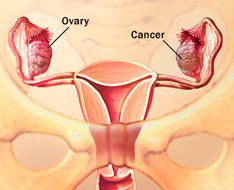
Your blood will be tested for a particular protein or a tumour marker called Cancer antigen125(CA-125).
This protein is often higher than normal in women with ovarian cancer. In women who are diagnosed
with ovarian cancer, these tests are also used later on to check the progress of the illness. To know more Click Here
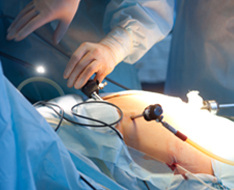
A transvaginal ultrasound (TVU) involves an ultrasound probe being inserted into your vagina to relay
images of the ovaries to a radiologist. It is important that this type of ultrasound is used as it gives a
much clearer picture of the ovaries than an abdominal or external ultrasound. To know more Click Here
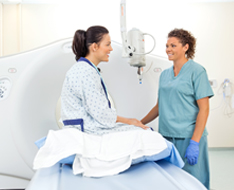
A pelvic or abdominal CT Scan or MRI to check for the spread of cancerTo know more Click Here

The final step is a biopsy, which removes a sample of ovarian tissue by laparoscopy and examines it under
the microscope. Biopsy is the only way to diagnose ovarian cancer with certainty, but cancer cells may be
detected in fluid obtained from the abdomen in women with ascitesTo know more Click Here
The most common form of hereditary breast and ovarian cancers (HBOC) are due to mutations in the BRCA genes. BRCA1 and BRCA2 are
tumour suppressor genes which are genes that normally prevent cancer from developing. Women who have inherited mutations in BRCA1 and
BRCA2 genes face a much higher risk of developing breast cancer and ovarian cancer compared with the general population.
The BRCA gene test is a blood test that uses DNA analysis to identify harmful changes (mutations) in either one of the two ovarian cancer susceptibility
genes â BRCA1 and BRCA2.
The BRCA gene test is most often a blood test. A doctor, nurse or medical technician inserts a needle into a vein, usually in your arm, to draw
the blood sample needed for testing. Your blood sample then goes to a lab for DNA analysis.
In some cases, other sample types are collected for DNA analysis, including saliva or skin biopsy samples. To know more Click Here

In India, cervical or cervix cancer is the most common woman-related cancer, followed by breast cancer. The main cause of cervical cancer is an infection called human papillomavirus (HPV). There are also other known risk factors including a weak immune system, Smoking and Diethylstilbestrol (DES) exposure.
Cervical cancer that is detected early is more likely to be treated successfully. Screening tests include:

During a Pap test, your doctor scrapes and brushes cells from your cervix, which are then examined in a lab
for abnormalities.
A Pap test can detect abnormal cells in the cervix, including cancer cells and cells that show changes that
increase the risk of cervical cancer.To know more Click Here
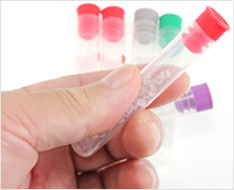
The HPV DNA test involves testing cells collected from the cervix for infection with any of the types of HPV
that are most likely to lead to cervical cancer. This test may be an option for women age 30 and older, or for
younger women with an abnormal Pap test. To know more Click Here
If you have symptoms or Pap test results that suggest precancerous cells or cervical cancer, your doctor will recommend one or more
of the following tests:
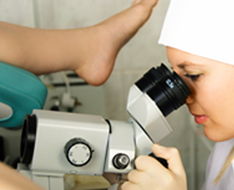
This test uses an instrument called a colposcope to look more closely at an area of abnormal tissue on the
cervix, vagina or vulva. A colposcope is a microscope designed to examine the cervix.
To know more Click Here

In a biopsy to look for cervical cancer, the doctor removes a small amount of tissue from the cervix to look
at under a microscope. Types of cervical biopsies include Punch biopsy, Leep cone biopsy,Laser
biopsy. To know more Click Here
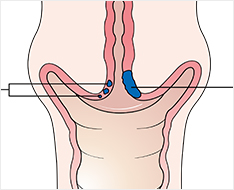
If you are diagnosed with cervical cancer and your doctor thinks it may have spread, you may have a
cytoscopy or proctoscopy or both. These tests use lighted tubes to view the inside of the bladder
(cystoscopy) or the anus, rectum and lower colon (proctoscopy).
To know more Click Here

Lung cancer is one of the common cancers in India. Smoking, chewing tobacco, increasing environmental pollution and other harmful
carcinogenic compounds such as asbestos, arsenic, are a few things that triggerÃÂ lung cancer.
Prostate screening test might include:

A blood sample is drawn from a vein in your arm and analyzed for PSA, a substance that's naturally
produced by your prostate gland. It's normal for a small amount of PSA to be in your bloodstream.
However, if a higher than normal level is found, it may be an indication of prostate infection, inflammation,
enlargement or cancer.
PSA testing combined with DRE helps identify prostate cancers at their earliest
stages.To know more Click Here
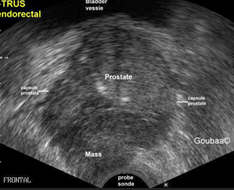
If other tests raise concerns, your doctor may use transrectal ultrasound to further evaluate your prostate. A
small probe, about the size and shape of a cigar, is inserted into your rectum. The probe uses sound waves
to make a picture of your prostate gland.To know more Click Here
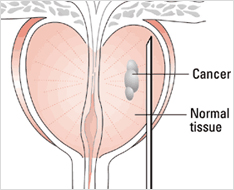
If initial test results suggest prostate cancer, your doctor may recommend a procedure to collect a sample
of cells from your prostate (prostate biopsy). Prostate biopsy is often done using a thin needle that's
inserted into the prostate to collect tissue. The tissue sample is analyzed in a lab to determine whether
cancer cells are present.To know more Click Here
If your doctor suspects your cancer may have spread beyond your prostate, imaging tests such as these may be recommended:
To know more Click Here
India has one of the highest rates of oral cancer in the world. More than 80,000 new cases are reported every year across the country. Factors that can increase your risk of mouth cancer include Tobacco use of any kind, including cigarettes, cigars, pipes, chewing tobacco, Heavy alcohol use, a sexually transmitted virus called human papillomavirus (HPV)

If your doctor suspects you may have oral cancer, one or more of the following tests may be used to find out if you have cancer.
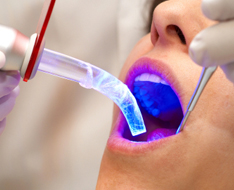
A biopsy may be obtained in different ways including brush biopsy,Incisional biopsy.
To know more Click Here
To know more Click Here

